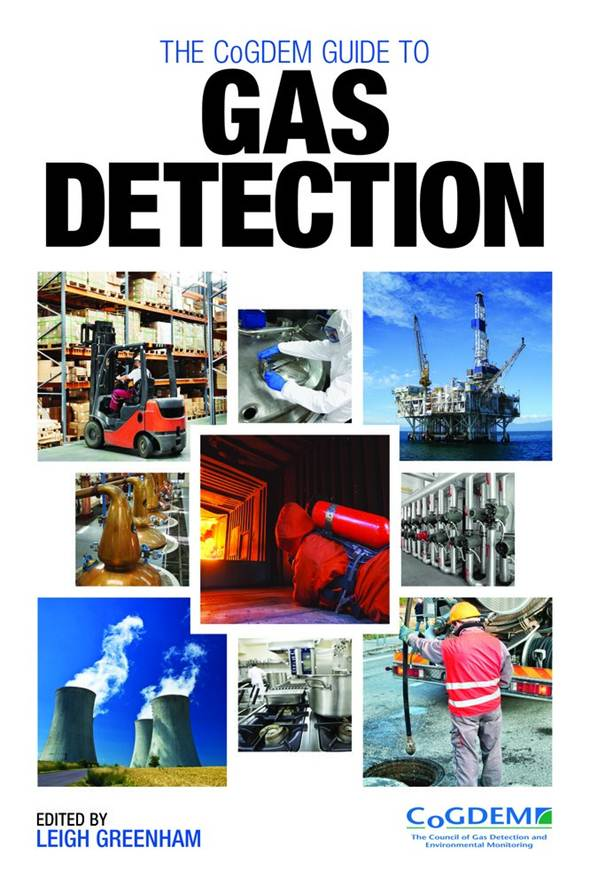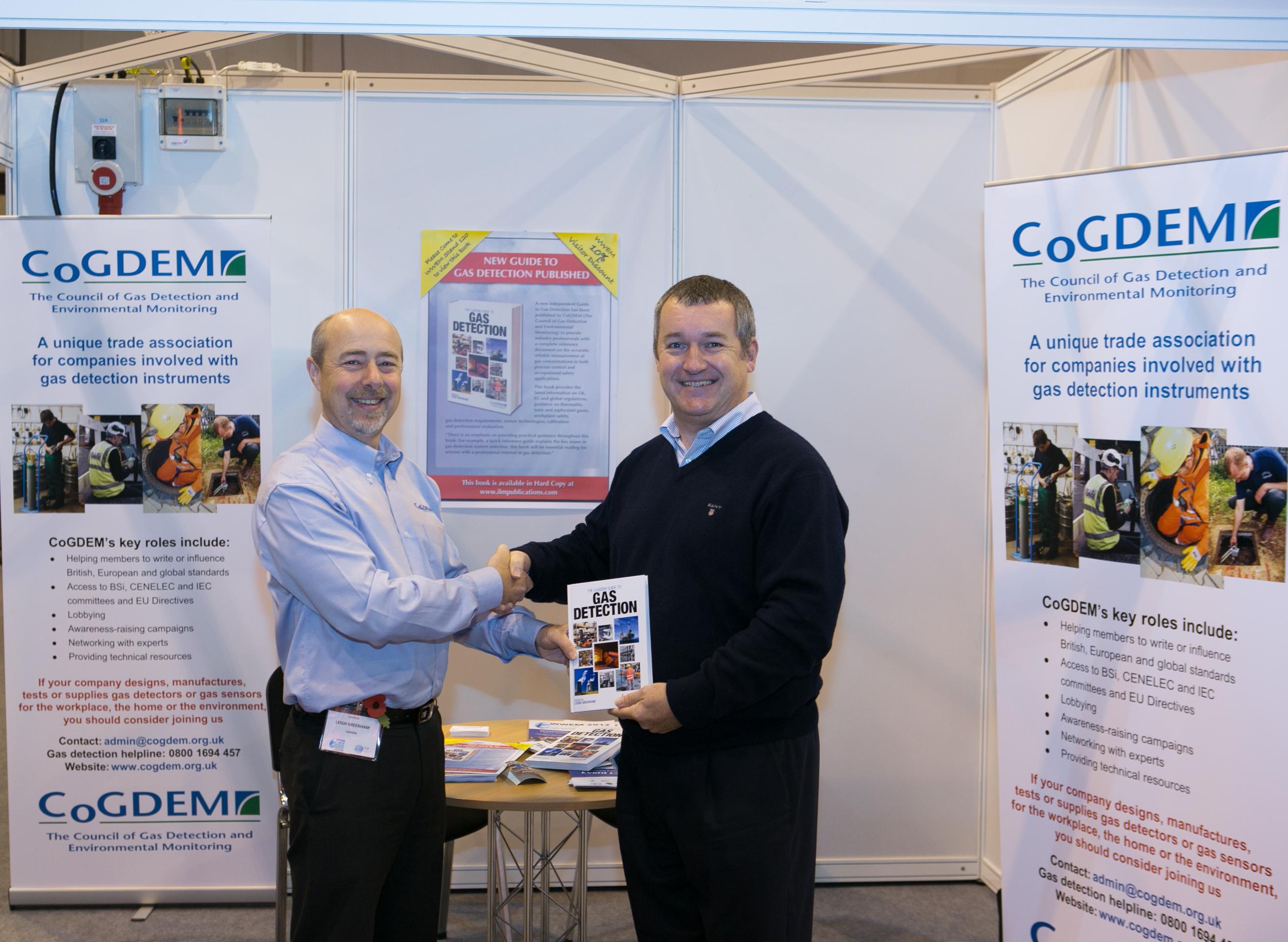 The CoGDEM Guide to Gas Detection
The CoGDEM Guide to Gas Detection
Order Now
This practical guide has been written by CoGDEM (the Council of Gas Detection and Environmental Monitoring) to assist users or specifiers of gas detection equipment. The book begins with a quick reference for selecting a gas detection system, which outlines the most salient points. There is more detail on this topic as well as on a variety of other areas such as gas detection requirements and training, sensor technologies, and instrument calibration and maintenance. There is also information on the science of gases and lists of relevant reference documents. The book covers UK, EU and global regulations and standards.
The chapters are written by key experts, providing comprehensive information for novice and experienced industry professionals in the gas detection field.
Table of Contents
Chapter 1 Introduction
1.1 Background to this Guide
1.2 Safety
1.3 CoGDEM: The UK Trade Association for the Gas
Detection Industry
Acknowledgement
Chapter 2 A Quick Guide to Selecting a Gas Detection System
2.1 Types of Gas Hazards
2.2 Selecting for Your Concentration Range
2.3 Environmental Considerations: Open Path, Point
Source, Portables?
2.4 Gas Detection System Selection
Acknowledgements
Chapter 3 The Chemistry and Dangers of Gases
3.1 The Structure of Gas Molecules
3.2 States of Matter
3.3 Molecular Energies
3.4 Gas Characteristics Important to Gas Detection
3.5 Gas Distribution and Gas Detection
3.6 Units of Measurement
3.7 Routinely Monitored Gases
3.8 Gas Detection and its Role in Safety Management
3.9 Staff Training
Further Reading
Acknowledgement
Chapter 4 Gas Detection Requirements and Training
4.1 Introduction
4.2 Hazardous Area Safety
4.3 Performance Requirements
4.4 FSM
4.5 Training
Acknowledgements
Chapter 5 Sensor Technologies
5.1 Oxygen
5.2 Carbon Dioxide and Infrared Photometry (also forHydrocarbons)
5.3 Inert and Asphyxiant Gases - Thermal Conductivity Sensors
5.4 Toxic Gases
5.5 Flammable Gases - Pellistors
5.6 VOCs
5.7 Gas Leak Detection
Further Reading
Acknowledgements

Chapter 6 A Guide to Gas Detector Selection
6.1 Introduction
6.2 Equipment Types
6.3 Selection (Considerations)
6.4 Installation and Use
6.5 Maintenance
6.6 Specifications Explained
Acknowledgements
Chapter 7 Calibration
7.1 Introduction
7.2 Calibration Concepts
7.3 Calibration Methods
7.4 Factors Affecting Calibration
7.5 Gas Cylinder Technology
7.6 Glossary of Terms
Acknowledgements
vi The CoGDEM Guide to Gas Detection
Chapter 8 Performance Evaluation
8.1 Introduction
8.2 Test Conditions
8.3 Mechanical Tests
8.4 Environmental Tests
8.5 Accuracy and Stability
8.6 Electrical/Electronic Tests
8.7 Software Evaluation
Acknowledgements
Chapter 9 Reference Documents
9.1 Standards List
9.2 Other Useful Information Sources
Acknowledgement
Appendix 1 An Overview of CoGDEM
A1.1 History
A1.2 CoGDEM’s Objectives
A1.3 Benefits of Being a Member of CoGDEM
A1.4 Categories of CoGDEM Membership
Acknowledgements
Appendix 2 Non-industrial and Domestic Gas Detection
Acknowledgements
Guidance from the CoGDEM Book on Gas Detection also includes sections on the physical properties of gases. Here are some examples.
Gas Properties
The physical and chemical properties of gases must be understood. When applying gases to check instrument performance it is important to consider the effects of temperature, pressure and humidity, and other factors. For example, heavy hydrocarbon gases respond very slowly and this should be considered particularly when zeroing the instrument after exposure to high gas concentrations. Some gases (such as hydrogen sulphide) may adsorb onto filters or tubing and later desorb back into the sampling system, causing apparent shifts in zero or fault conditions.
Density
Knowing the gas density-is it heavier or lighter than air-helps determine whether the hazard in an enclosed space will be at the top or the bottom of the room. Even in an open, ventilated space it is important to know the density since heavier-than-air gases can remain on the ground or at lower levels. However, density is not the only or sometimes even the major factor that determines gas distribution; for example, escape pressure or air movement due to temperature differences will have an impact on gas distribution when gas escapes.
Chemical activity
The chemical activity of different gases varies considerably; for example, methane is not a particularly reactive gas and is difficult to decompose or burn and has a high ignition temperature. Other gases, such as butane, propane, and hydrogen are easily combustible and readily decompose into smaller chemical constituents.
Gases that are less stable (such as chlorine, ozone, nitrogen dioxide, hydrogen sulphide, and sulphur ) will react easily with many common materials. These reactive gases require careful calibration and safety practices. They may react with the materials used in the calibration system-such as tubing, flow meter, etc.-and can be affected by moisture content and other factors in the sampling system. Also, it is important to remember that because their dangerous concentrations are very low, small changes in the sampling system may create large errors in the calibration results.
Flammability
The flammable limits are of vital importance when measuring gases because they determine the minimum and maximum permissible concentrations of a gas-in-air mixture that will burn under normal conditions of temperature and pressure.
An important feature of a flammable gas, particularly in terms of hazardous area equipment, is its self-ignition temperature. This is the temperature at which the gas-in-air will spontaneously combust with no open ignition source. Hazardous area equipment such as flammable or intrinsically safe gas detectors have a temperature classification, which is the maximum surface temperature that they can attain either under fault or normal operation. It is important that this temperature remains less than the self-ignition temperature of the gas the product will be used in. This topic is discussed fully in a number of publications, particularly in the IEC EN 60079 family of standards.
Order Now
